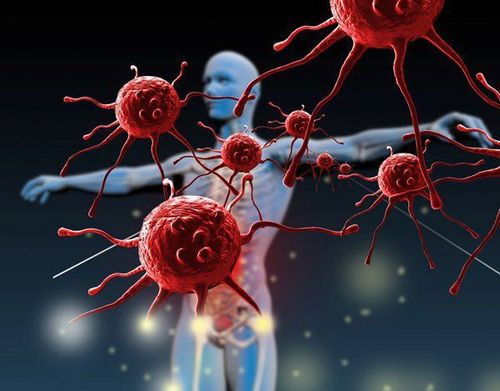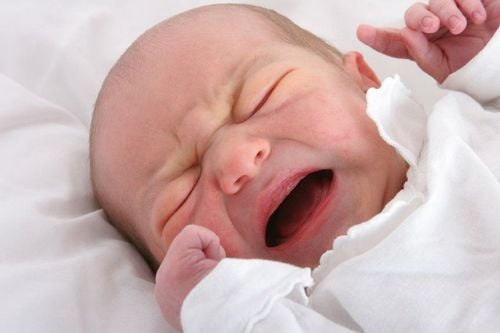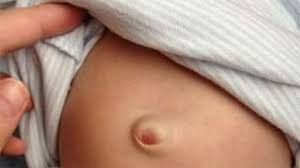This is an automatically translated article.
This article is professionally consulted by Master, Resident Doctor Dang Thi Ngoan - Pediatrician - Neonatologist - Department of Pediatrics - Neonatology - Vinmec Ha Long International Hospital.Neonatal pulmonary dysplasia is a chronic lung disease that can lead to dangerous complications such as atelectasis, heart failure or even death. Early detection and timely treatment are of great significance in the treatment of pulmonary dysplasia in children.
1. What is pulmonary dysplasia?
Pulmonary dysplasia is a chronic lung disease that usually occurs in premature infants. This is a phenomenon characterized by keratinization and necrosis of the epithelium of the small bronchi, resulting in a decrease in surfactant and fibrous interstitial tissue, leading to pulmonary fibrosis. The cause of pulmonary dysplasia is high-pressure or long-term positive-pressure ventilation.
Neonatal pulmonary dysplasia can lead to many dangerous complications such as:
Atelectasis: Pulmonary dysplasia causes long-lasting lung parenchymal lesions, atelectasis or even loss of lung function and does not have the ability to recover; Heart failure: Children with pulmonary dysplasia receive continuous and prolonged mechanical ventilation, leading to increased pulmonary artery pressure, affecting heart function and possibly heart failure; Death: Newborns with pulmonary dysplasia are more dependent on ventilators and are at increased risk of infection. When infected, the disease condition is easy to get worse, the course is complicated and there is a high risk of death.
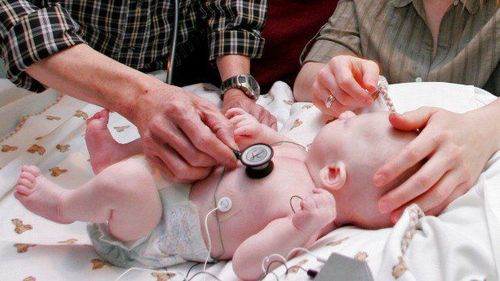
Bệnh loạn sản phổi ở trẻ sơ sinh có thể gây suy tim
2. Diagnosis of neonatal pulmonary dysplasia
Take history after birth: Premature babies; CPAP-assisted postpartum respiratory failure, mechanical ventilation with high pressure or high oxygen concentration; Clinical examination: The child has signs of respiratory failure (rapid breathing, chest indrawing and cyanosis of the skin and lips if oxygen is stopped), SaO2 <90% when oxygen is stopped; Laboratory: X-ray; blood smear test, CRP to screen for infection; Echocardiography to rule out ductal arteriosus respiratory failure. Diagnosis is confirmed when:
Children are dependent on oxygen for more than 28 days and have abnormal signs on chest X-ray in each specific period.
Differential diagnosis:
Need to differentiate neonatal pulmonary dysplasia from other health problems such as:
Persistent pneumonia due to unresponsiveness to antibiotics : Diagnosed by chest X-ray parenchymal injury and perform infection tests such as blood smear, CRP; With ductus arteriosus: Diagnosis is by continuous or systolic heart murmur and Doppler echocardiography.
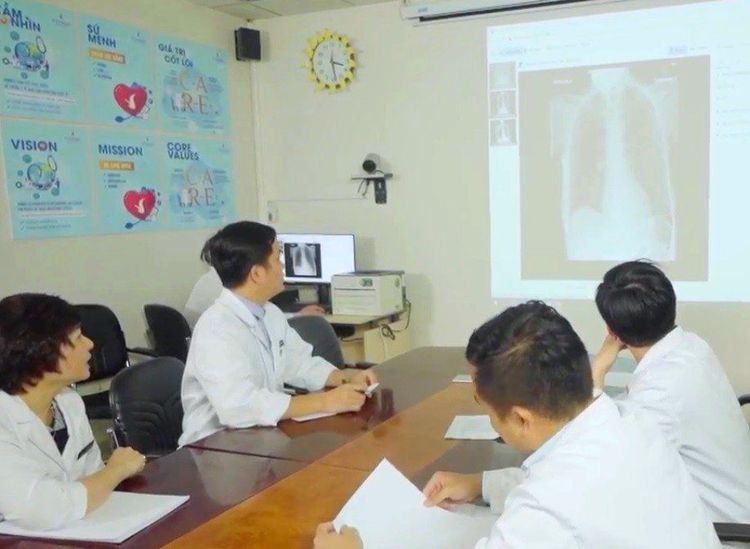
Chẩn đoán loạn sản phổi ở trẻ sơ sinh bằng cách chụp X-quang
3. Treatment of neonatal pulmonary dysplasia
Principles of treatment of pulmonary dysplasia in newborns are: Respiratory support, fluid restriction and drug use for children. Specific treatment methods are as follows:
Respiratory support: Provide oxygen to the child with the lowest concentration so that the SaO2 index is at 90-95%. Should choose the method of oxygen breathing through the cannula, gradually reduce the oxygen flow and gradually switch to intermittent oxygen before stopping giving the child oxygen. For children who are helping to breathe, airway pressure should be reduced to the lowest level, keeping PaCO2 at 45-55mmHg and SaO2 at 90-95% to avoid causing alveolar hyperventilation; Limit fluid: Maintain the amount of fluid entering the baby's body at 130 - 150 ml/kg/day and gradually increase if the child's respiratory failure improves; Use of medicine Health monitoring: During the time the child is hospitalized, it is necessary to monitor the SaO2 index regularly (including when the child is nursing, sleeping), blood gas testing when necessary (during the period when the child is still breathing), according to the doctor. Daily ionization monitoring (during the diuretic phase), HCT infection control tests performed weekly. After the child is discharged from the hospital, it is necessary to periodically re-examine to monitor breathing and normal development in 1-2 years.
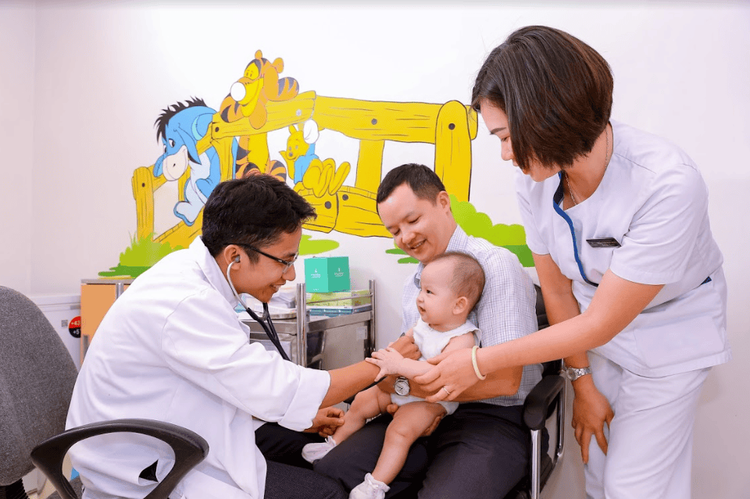
Khi trẻ có biểu hiện sức khỏe bất thường, cha mẹ nên đưa trẻ đến cơ sở y tế ngay
Neonatal pulmonary dysplasia is a serious disease, difficult to treat and can cause death or serious sequelae that affect the growth and development of the child. Therefore, when a child is determined to have pulmonary dysplasia, parents need to coordinate with their doctor in treating the disease to avoid complications and dangerous sequelae.
Pediatrics department at Vinmec International General Hospital is the address chosen by many parents to examine and treat common diseases in children such as: otitis media, bacterial fever, viral fever, pneumonia. children,... With modern equipment, sterile space, minimizing the impact as well as the risk of disease spread, a team of leading specialists with extensive professional experience will help with the visit. Examination is no longer a concern of parents.
Doctor Dang Thi Ngoan used to be a lecturer in the Department of Pediatrics - Hai Phong University of Medicine and Pharmacy. Having been granted certificates in Pediatrics at home and abroad such as: Westmead Hospital, Australia; Hai Phong Medical University
Currently, Doctor Ngoan is a pediatrician - neonatologist at the Department of Neonatology at Vinmec Ha Long International Hospital
To register for examination and treatment at Vinmec International General Hospital, You can contact Vinmec Health System nationwide, or register online HERE.
MORE
Bone marrow mononuclear stem cell transplant to treat bronchopulmonary dysplasia: Case report What health problems do preterm babies often have? Bronchopulmonary dysplasia: A common disease in premature babies





